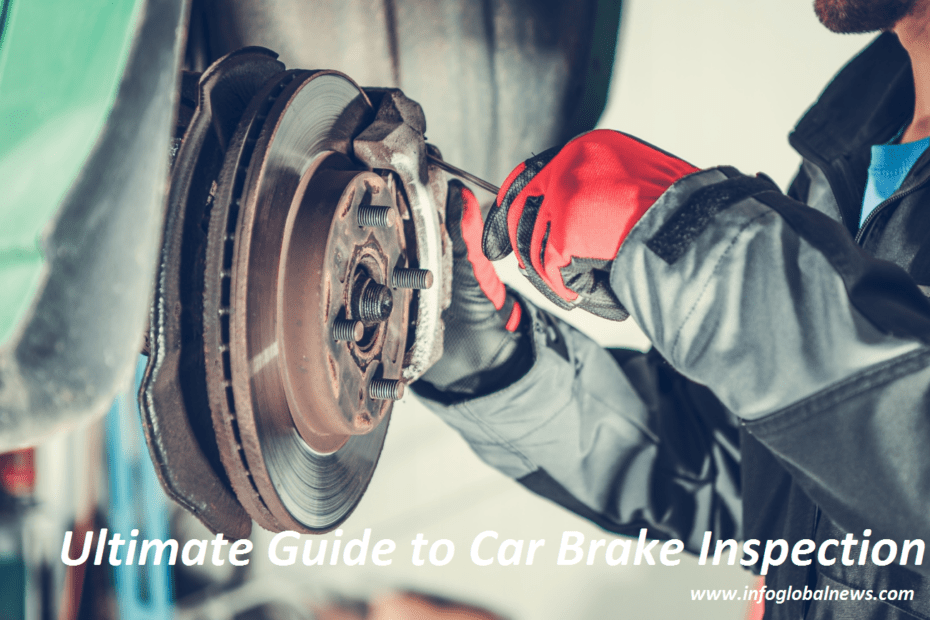Ultimate Guide to Car Brake Inspection
When it comes to keeping your ride safe, there’s one thing you can’t afford to ignore – your brakes. Checking your car’s brakes isn’t just about safety on the road; it’s also about keeping your four-wheeled buddy in top shape. This ultimate guide will give you the lowdown on brake inspections, when and how to do ’em, and the telltale signs that your brakes need some TLC. Let’s dive into the world of brake inspections and make sure you’re cruising with peace of mind.
Section 1: Why Car Brake Inspections are a Must
1.1 Safety First
Your car’s brakes are like the superhero capes of your vehicle – they’re the first line of defense when it comes to dodging accidents and handling on-road emergencies. Regular brake check-ups keep those capes in peak condition, ready to save the day when you need them.
1.2 Dodge Costly Repairs
Ignoring brake troubles can end up costing you big bucks down the road. Routine brake inspections help you spot and squash small issues before they morph into wallet-draining problems.
1.3 Stay Legal
In many places, the law insists on keeping your brakes in shipshape condition. Regular inspections and maintenance keep you on the right side of the law, steering clear of fines and penalties.
Read Also: Top 5 diagnose car electrical problems
Section 2: Timing is Everything for Brake Inspections
2.1 Mileage Check
It’s usually smart to peek at your brakes every 12,000 to 15,000 miles. But remember, this can change based on how you drive and the type of brake pads you’re rocking.
2.2 Squeals, Vibrations, and More
Apart from the regular checks, keep an eye (or rather an ear) out for these signs:
Squeaky or Screechy Sounds: High-pitched noises when you hit the brakes could mean your brake pads are feeling the wear and tear.
Shaky Brake Pedal: If your pedal dances when you press it, your brake rotor might be saying, “Hey, look at me!”
Squishy Pedal: A pedal that sinks too far could signal air in your brake lines or a sneaky brake fluid leak.
Car Swerving Drama: If your ride pulls to one side during braking, it might be due to uneven brake wear.
2.3 After Off-Roading Adventures
If you’ve been tackling rough terrains, whether in heavy rain, snow, or off-road style, it’s a good call to check your brakes afterward. These conditions can fast-track brake wear.
Section 3: DIY vs. Pro Brake Inspections
3.1 Homegrown Brake Check
You can do a basic brake check in your garage. Here’s the lowdown:
Visual Scan: Check how thick your brake pads are. If they’re thinner than a quarter-inch, it’s time for some pad-replacing action.
Brake Discs/Rotors: Examine your brake discs or rotors for deep scratches or grooves. A smooth surface is what you’re aiming for.
Brake Lines and Hoses: Make sure they’re leak-free and wear-free.
Brake Fluid: Peek at the brake fluid reservoir. It should be chillin’ at the recommended level.
3.2 Bring in the Pros
For a deep dive into brake health, it’s best to call in the professional mechanics or head to an auto service spot. They’ve got the gear and the know-how to give your brakes the full spa treatment, from checking the calipers to the master cylinder and more.
Section 4: Maintenance and Brake Love
4.1 Fresh Brake Pads
When your brake pads are showing signs of wear, don’t procrastinate – swap them out pronto. You’ve got options, like ceramic and semi-metallic pads, so pick the ones that match your driving style and budget.
4.2 Brake Fluid Shake-Up
Changing your brake fluid every couple of years is a great way to keep your braking game strong and stave off moisture buildup.
4.3 Rotor Rehab or Replacement
If your rotors are on the fritz, your mechanic might suggest either giving them a facelift or going for the full-on replacement, depending on the damage.
4.4 Routine TLC
Keep up with regular vehicle maintenance to keep your brakes in their happy place. This includes tire rotations, wheel alignments, and suspension checks.
Section 5: Wrapping It Up
Knowing why car brake inspections are crucial and when to schedule them can be a game-changer for your safety and peace of mind behind the wheel. By being proactive and tackling brake issues early, you not only keep yourself safe but also save some serious cash in the long run. So, don’t skip those brake inspections, and remember that a well-loved braking system is a vital part of being a responsible car owner. Keep it rubber side down and drive safe!
See Also:
